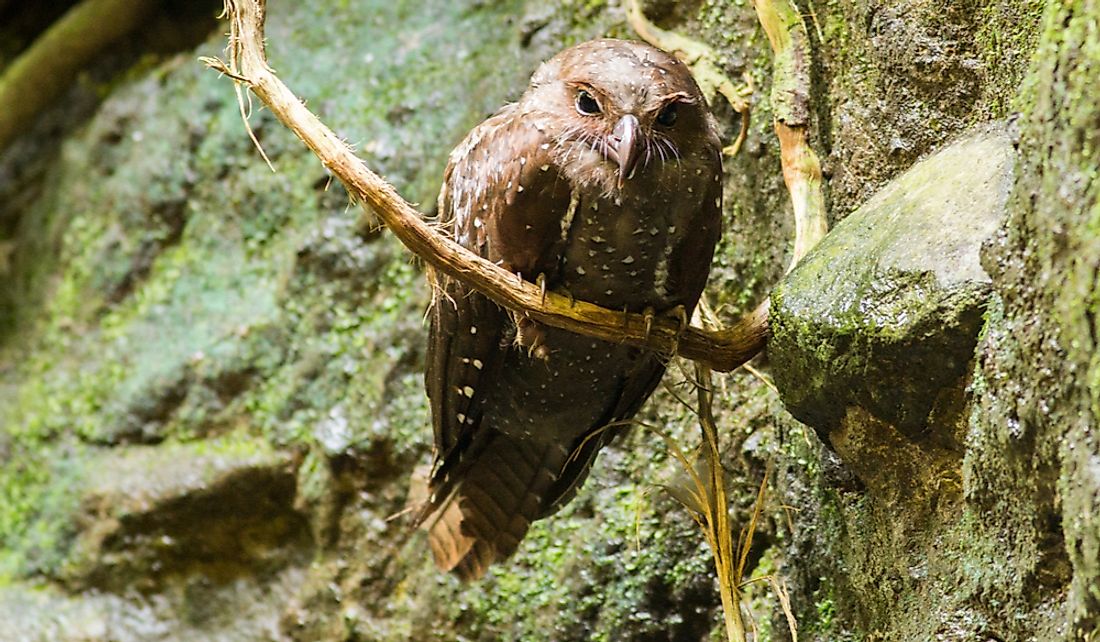Where Do Oilbirds Live?

An oilbird is a species of bird that primarily inhabits the northern region of South America, as well as the island nation of Trinidad. The species carries the scientific name Steatornis caripensis, but is often locally referred to as the "guacharo." Oilbirds are the only nocturnal fruit-eating birds in the world, and their name originates from the word steatornis, which means "fat bird," based on the fact that oilbird chicks have 50% more fat than adult oilbirds. Additionally, local populations in South America historically made oil from melting this fat, which was used to light torches. The recorded history of the oilbird is attributed to Prussian biogeographer Alexander von Humboldt, who studied the species in 1799.
Description and Physical Features
Oilbirds are slender birds roughly the size of a hawk, and an adult can grow up to 40-49 cm in length and weigh between 350 and 475 g. However, chicks, which have stores of fat in their thighs, can weigh up to 600 grams. The species has short, bare legs, with long curved toes and sharp claws, and hooked bills. Furthermore, the oilbird has small eyes, with large pupils that can gather lots of light. The bird’s retina contains one million rod cells per square millimeter, which is the highest density of any invertebrate. Oilbirds have large, brown feathers, as well as black bars and white spots, and have a wingspan of about 95 cm. Over time, the wings of the oilbird have adapted features that enable it to hover and engage in twisting flights. Additionally, the oilbird has a long rounded tail.
Habitat and Range
Oilbirds primarily inhabit northern parts of South America, and live in montane forests and evergreen lowlands. The species live in colonies that can contain between 10,000 and 18,000 individuals. Oilbirds can live at various elevations, ranging from sea level to approximately 11,200 feet above sea level. Some of the countries with oilbird populations include Venezuela, Brazil, Guyana, Bolivia, Colombia, Peru, Ecuador, and the island nation of Trinidad and Tobago.
Behavior
Oilbirds are nocturnal birds with strong vision, and navigate through echolocation, which involves emitting high-pitched clicking sounds, and then listening for echoes produced by nearby objects. Considered to be frugivores, the species feeds on fruits, particularly camphor, incense, tropical laurel, and palm fruits. They hunt for food during the night, traveling as far as 75 miles away from their caves. Like cows, oilbirds regurgitate food eaten during the night, and properly digest it during the day while they sleep. Oilbirds breed in caves, and both males and females share responsibility for raising chicks, which are fed fruit pulp. Oilbirds are seasonal migrators.
Conservation and Status
Popular conservation sites for oilbirds include the Guácharo Cave (Venezuela), Asa Wright Centre (Trinidad), Cueva de Los Tayos (Ecuador), and Carrasco National Park (Bolivia). According to the 2016 International Union for Conservation of Nature's (IUCN) Red List, oilbirds are listed as a species of "Least Concern."











